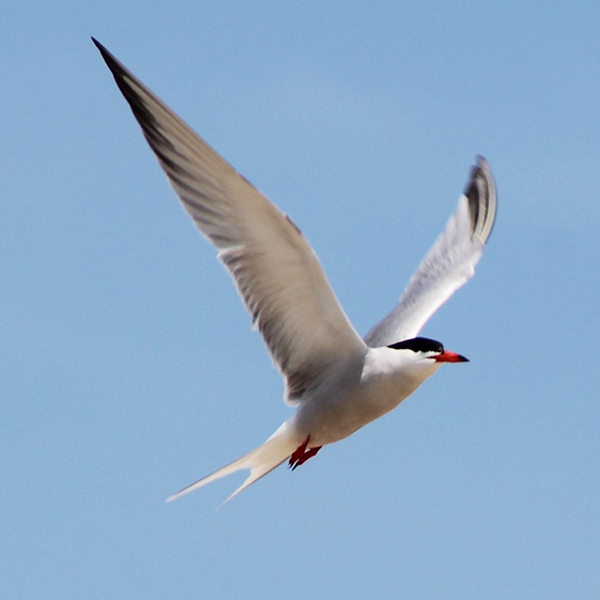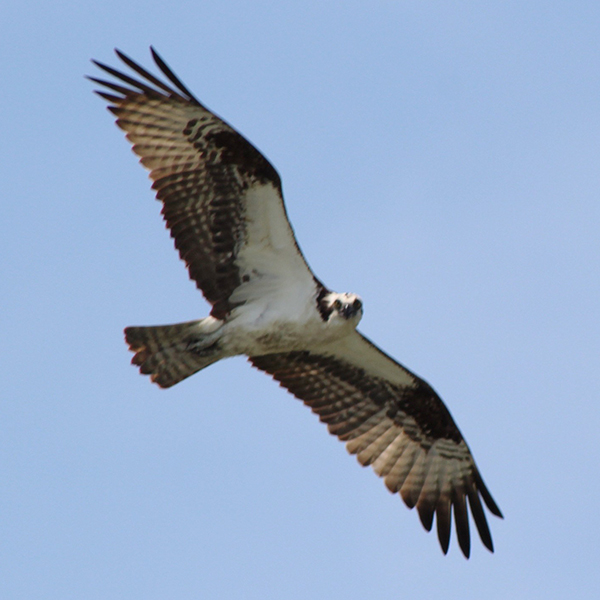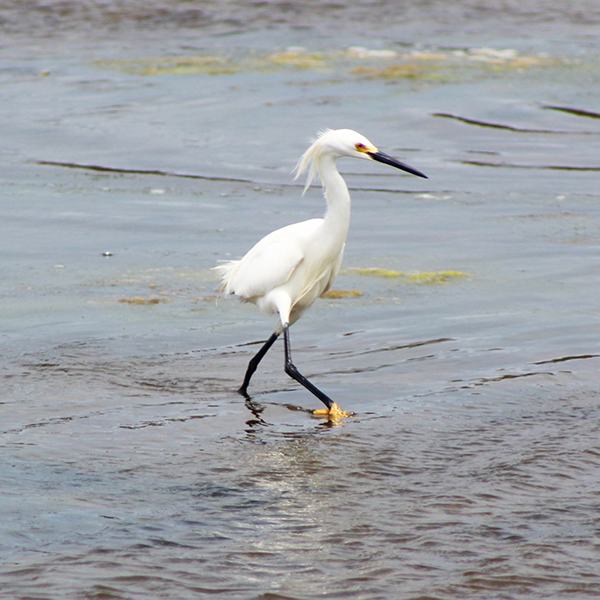FISHERMAN ISLAND NATIONAL WILDLIFE REFUGE
In Brief: Barrier island off the tip of the Delmarva Peninsula, a natural resting place for migrants and vagrants in migration seasons; no access during breeding season because of sensitive beach-nesting species and colonial waterbirds.
Access: Details available at: https://www.fws.gov/refuge/Fisherman_Island/events/refugetour.html. Free group tours (4-mile walk) are offered on Saturdays October through February, weather permitting. All groups must be accompanied by a refuge volunteer or staff member. Advance registration required. No bathroom facilities on the island, but one is available near the North Toll Plaza of the Chesapeake Bay Bridge-Tunnel, 2 miles to the north.
Telephone: 757-331-2760
Email: FW5RW_ESVNWR@fws.gov
EVERYTHING YOU NEED TO KNOW ABOUT BIRDING FISHERMAN ISLAND NATIONAL WILDLIFE REFUGE
Black Skimmer
Fisherman Island National Wildlife Refuge is the southernmost barrier island of the Virginia Eastern Shore, lying a half-mile south of Wise Point. The island is thought to be only about 250 years old; in the nineteenth century, it was still small, only about 25 acres. Today, it covers over 2000 acres, comprised mostly of beach, salt marsh, and a smaller amount of scrub-shrub and low-stature maritime woodland habitat (American Hackberry, Black Cherry, Sassafras, etc.). Over 300 species have been recorded here, over 60 of them as breeding birds. Virginia’s first nesting of White Ibis occurred here (1977), and the state’s only nesting attempt of Painted Bunting as well (2017). Roseate Tern is a former nester.
Route 13 bisects the island, but pulling over to the road shoulder to watch birds is not permitted. For those visiting with a guided tour, a trail leads from a small parking area through a woodland to the beach; otherwise, the island is trackless, as is the case with most of Virginia’s barrier islands. Visitors should come prepared for ticks, mosquitoes, and deer flies, even in autumn. It is recommended that pants and boots be treated with Permethrin, to avoid tick-borne diseases. Walking in soft sand is necessary through some portions of the guided tour.
Because Fisherman Island’s habitats are so critical to the survival of a host of species of concern—Piping Plover, Least Tern, American Oystercatcher, Gull-billed Tern, and many others—it is closed to the public during the nesting season, from March through September. Refuge personnel and local scientific groups monitor nesting species carefully and ensure that the impact of predators (and trespassers) is minimal. Autumn and winter seasons are considered below, but spring and summer are both productive for birding, with many species similar to those observed just to the north, at Eastern Shore of Virginia National Wildlife Refuge, and to the south, at Chesapeake Bay Bridge-Tunnel.
FALL
The fall migration season is difficult to predict, nowhere more so than on an island at the tip of a southern-oriented peninsula. Birding can be a grab bag of shorebirds, seabirds, waterfowl, and land birds of many sorts on Fisherman Island, with numbers of migrants and local birds changing from day to day and even rapidly through the course of a single day. This is because most birds only use the island briefly during migration, to rest or roost before continuing their movements. As a consequence (and also because access is restricted), it is not an easy place to bird or to pursue birds observed by other parties. Most tours only cover a few miles of beach and a short stretch of scrubby habitat.
Nevertheless, the pot-luck aspect of birding on Fisherman Island can be quite thrilling, as just about anything is possible here during migration; the morning’s list is likely to have some unusual juxtapositions of species. Many birders hurry along the woodland trail to get to the beach, understandably, but during migration, the woods can be teeming with migrants, including warblers and other Neotropical migrants. If winds overnight have been brisk (and westerly or northwesterly), at least some of these nocturnal migrants have landed on Fisherman after a flight from over the Chesapeake Bay or Atlantic Ocean: they overshot the peninsula and had to hurry back northward to dry land. These birds sometimes settle into feeding flocks but more typically will be full of restlessness and soon determine that the woods don’t have enough food to sustain them; many fly farther northward in the first few hours of daylight, over Fisherman Inlet, in the direction of Kiptopeke State Park, while others move up the eastern side of the peninsula, through Eastern Shore of Virginia National Wildlife Refuge. Thus, an early morning birding on Fisherman during a day of active migration will include many more species than a later morning. The morning of 9 September 1998 saw scores of Empidonax flycatchers and thousands of warblers raining down on the island, apparently coming in from the bay/ocean, and such events are probably more frequent than is currently known.
After a thorough check of the woods (the grassy trail is full of ticks, beware), continue down the trail to the more open areas nearer the beach. The scrubby inner dune area often holds a Lark Sparrow early in the fall or Clay-colored a bit later in the fall, and open-country species like Dickcissel are often briefly attracted to this habitat as well. The view of the sky here makes watching overhead migration of smaller land birds (and raptors) easier than along the first mile of the trail, so it’s well worth spending time to see what birds are moving and in what directions. On an average day, dozens of Baltimore Orioles, Eastern Kingbirds, and Bobolinks can be expected with a northerly breeze in early September, and skies full of warblers can occur almost any time during a cool front in autumn.
Black Skimmers and Common Tern
Photographing these birds in flight is a marvelous way to test your identification skills—or to identify birds that otherwise are just a blur or blip in the binocular. On rare occasions, raptors will gather and mill around on Fisherman in numbers greater than counted at the Kiptopeke hawkwatch to the north! Among raptors noted here, Mississippi Kite, Northern Goshawk, Rough-legged Hawk, and Golden Eagle are relatively rare, though the eagle is frequently seen in October, in “kettles” of Turkey Vultures circling above Fisherman, hesitant to cross Chesapeake Bay. As the weather cools, diversity of Neotropical migrants drops, but Yellow-rumped Warblers and Tree Swallows in great numbers keep the eyes busy; both feed on the berries of Myrica cerifera, Wax Myrtle, abundant on Fisherman. Listen for the distinctive calls of Lapland Longspur overhead or flushing from sandy areas behind the dunes.
Beach walking on Fisherman Island is most productive on the eastern side of the island (east of Route 13); much of the southern and southwestern portion of the island has suffered erosion in recent years, so that to study roosts of gulls, skimmer, terns, and shorebirds requires a bit of a walk, as much as 9 miles round-trip. Early in the fall, a few Least and Black Terns might still be around, but by early October, only Sandwich, Forster’s, Royal, Caspian are normally present, with a few Commons possible. Gulls in autumn are normally just Laughing, Herring, Great Black-backed, and Ring-billed, but Bonaparte’s and Lesser Black-backed Gulls are occasional on and off the beach, and rarer species become more likely later in the season (Franklin’s, Little, Iceland, for instance). Peregrine Falcons and Merlins use driftwood and other beach debris as hunting perches in autumn, especially the juveniles. Beach walking can also produce interesting observations of ailing or deceased seabirds, and photographs of specimens can provide valuable information for science. Virginia’s only specimen of Brown Booby is from Fisherman (November 1999), and there are two other records here, June 1982 and November 1991.
Most of the shorebirds observed in autumn are more easily seen elsewhere, but Fisherman often provides nice encounters with Piping Plover. As one nears the eastern sides of the islands, large rain pools and small inlets provide natural havens for shorebirds, waterfowl, gulls, and terns, and the species diversity here is often the greatest, from the southeast to the northeastern portion of the island, where protected mudflats provide more roosting and foraging areas. Shorebird surveys in early autumn have turned up a few Wilson’s Plovers, probably birds that had nested or hatched farther north, in Accomack County. Each bird in this area should be scrutinized carefully for Eurasian vagrants: the geographic location of Fisherman Island at the mouth of Chesapeake Bay makes it a prime place for such a bird to touch down. Shorebirds that favor freshwater habitats, such as Black-necked Stilt and American Avocet, are rarely reported at Fisherman, certainly because saltwater habitats are predominant. Nevertheless, if there has been storm activity (tropical or otherwise), all bets are off, as birds in active migration are grounded or displaced and will seek refuge in just about any setting. This is especially true of shorebirds, gulls, and terns. One intrepid birder found a Long-billed Curlew here 10 October 2005. Marshy habitats of the interior portions of the island are often full of herons, egrets, and ibis, and American Bittern migrants often take refuge here, though they are seldom seen, as they hide during the day, as is true of most rails.
Later in autumn, by November, most of the terns have moved on, and shorebirds are limited to those species that overwinter here (the occasional lingering Piping Plover stays until Christmas or so). Waterfowl have moved in, and skeins of scoters and other marine ducks can be seen from most vantages on the island’s beaches from October onward. The interior of the island also has several mostly hidden freshwater bodies, and dabbling duck species can often be seen flying into or out of those. Insect life is much reduced, but a warm day can bring out a few, so taking precautions is wise even late in the season. November is also the time to keep a sharp eye out for vagrant species of many sorts. Virginia’s first report of Cave Swallow came from Fisherman Island in November 1998, and many have been seen in the vicinity since that time. Finch flights (as occurred most notably in 1976 and 2012) are occasionally detected on Fisherman; a flock of 22 Common Redpolls was here 28 November 1993. Some of the autumn season’s more memorable vagrants here include Black-throated Gray Warbler (13 September 2004) and the state’s first confirmed record of Swainson’s Hawk (20 October 1979). Certainly, many more vagrants—particularly in the flycatcher family—would be discovered here if coverage by birders increased.
WINTER
Few species of birds migrate during winter, technically, but many bird species move considerable distances in winter in search of food. Because the mouth of the Chesapeake Bay is so dynamic, a veritable crossroads for many kinds of marine organism, birds are also in nearly constant movement through the area. Fisherman Island makes an optimal location to watch the ebb and flow of birds through the day and the season. As in autumn, the spectacle can change hour to hour, as birds making local movements to and from feeding areas mix with other species making facultative movements to seek food in new areas or to escape harsh conditions elsewhere.
Winter can be a challenging time of year to visit Fisherman Island, when weather is cold, windy, and rainy—or quite delightful, when clear and sunny. Wintering waterfowl can be abundant, both in the marshes and ponds and on the oceans, with over 20 species commonly recorded in a morning; a male Eurasian Wigeon is often among the flock of American Wigeon. When not feeding, shorebirds and various water birds tend to cluster along sheltered beaches: the lee side of the island is on the south, and thousands of gulls can often be found loafing here. Winter is a the best time to look for Snowy Owl and Snow Bunting along the windswept shores and in the dunes, or to set up a scope and watch the procession of gannets, loons, and other water birds; Virginia’s largest count of Red-necked Grebe (179 birds) was recorded here 26 March 1994, during a massive flight of the species caused by the freezing the Great Lakes.
Noteworthy records in winter include a Pacific Loon (6 December 1994), a Burrowing Owl (11 January 1994), a wintering Ferruginous Hawk (last seen 6 March 1995), a wintering Northern Shrike (2004-2005), Long-eared Owls, and two adult male King Eiders together (14 March 1987). Beach-combing birders have discovered notable specimens as well. Virginia’s only specimen of Little Gull was found at Fisherman (26 December 1982), and one sharp observer watched a Northern Harrier pluck a beached Dovekie for dinner (27 December 1988). Some of these discoveries were made by birders participating in the Christmas Bird Count, conducted in this area since 1955. Participation in this survey often opens opportunities to gain access to otherwise restricted areas.
OTHER SEASONS
Although there are currently no options for public visits during the spring and summer seasons, volunteers and staff at the refuge have reported marvelous discoveries over the years, including many species of warbler rarely seen on the coast in spring, an American White Pelican sitting on an eggless nest (1995), a Wood Stork (10 June 2000), nesting Barn Owls, a Crested Caracara, several Sandhill Cranes, and Magnificent Frigatebird (26 May 2006). The location and habitats of Fisherman Island would likely make it attractive to vagrant Caribbean species such as Black-whiskered Vireo and Antillean Nighthawk, which have reached Back Bay (southeastern Virginia) and the Outer Banks (North Carolina), respectively, in spring and summer. The mudflats of the northern side of the island appear ideal for a vagrant Reddish Egret at low tide. Roseate Spoonbill, not yet been recorded, might also be expected here. The endangered Northeastern Beach Tiger Beetle hangs on by a thread at Fisherman, but it is unlikely to be seen in autumn or winter.





